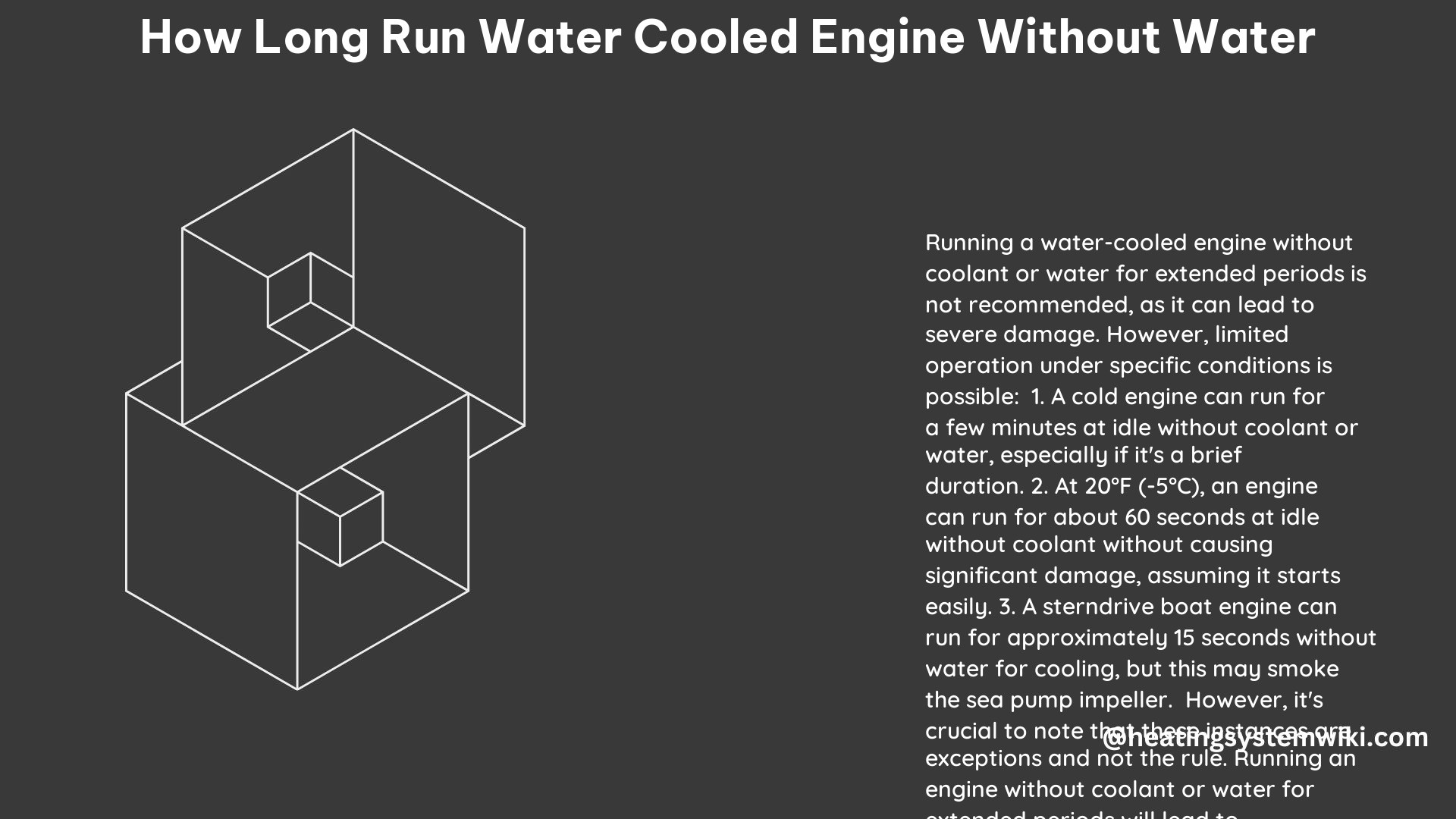Running a water-cooled engine without water or coolant can cause significant damage, especially if the engine is run for an extended period. The duration for which an engine can safely run without coolant depends on various factors, such as the engine’s size, load, and ambient temperature.
Understanding Water-Cooled Engines
Water-cooled engines rely on a coolant system to absorb and dissipate the heat generated during combustion. The coolant, typically a mixture of water and antifreeze, is circulated through the engine block and heads, where it absorbs heat. The heated coolant is then transferred to the radiator, where it is cooled by airflow before being recirculated back to the engine.
The coolant also contains additives that prevent corrosion, provide freeze protection, and lubricate the water pump. Running a water-cooled engine without this coolant can lead to severe consequences.
Factors Affecting Engine Durability Without Coolant

The duration for which a water-cooled engine can safely run without coolant depends on several factors:
-
Engine Size: Larger engines, such as those found in heavy-duty trucks or high-performance vehicles, generate more heat and require more efficient cooling systems to dissipate it. Smaller engines may be able to run for a slightly longer period without coolant before sustaining damage.
-
Engine Load: An engine under heavy load, such as during acceleration, towing, or climbing a hill, generates more heat than an engine running at a lower load. Engines under heavy load are more susceptible to overheating and damage when run without coolant.
-
Ambient Temperature: The outside temperature can also play a role in how long an engine can run without coolant. In cooler environments, the engine may be able to run for a slightly longer period before overheating, compared to hotter ambient conditions.
Recommended Run Times Without Coolant
Based on the information provided, here are some general guidelines for the maximum recommended run times without coolant:
| Vehicle/Engine | Maximum Recommended Run Time Without Coolant |
|---|---|
| 2001 Volvo S80 (with coolant leak around passenger side turbo) | 1-2 minutes |
| 466 Motor (flathead drag car) | Can run for extended periods with proper heat dissipation, but not recommended for most engines |
| 1996 S-10 Blazer (with damaged radiator) | A few minutes |
| Boats | 15 seconds or less |
It’s important to note that these are general guidelines, and the actual safe run time may vary depending on the specific engine, load, and environmental conditions. In all cases, it is recommended to address any coolant leaks or cooling system issues as soon as possible to prevent further damage.
Consequences of Running Without Coolant
Running a water-cooled engine without coolant can lead to severe and irreversible damage to the engine’s components. The lack of proper cooling can cause the following issues:
-
Overheating: Without the coolant to absorb and dissipate the heat, the engine’s temperature can rise rapidly, leading to overheating.
-
Cylinder Wall and Piston Damage: The intense heat can cause the cylinder walls and pistons to expand, leading to seizure and potential engine failure.
-
Valve Damage: The high temperatures can also damage the engine’s valves, causing them to warp or even melt.
-
Water Pump Impeller Damage: In the case of boats, running the engine without water for cooling can quickly damage the sea pump impeller.
DIY Tips for Handling Coolant Leaks
If you suspect a coolant leak in your vehicle, follow these DIY tips to minimize the risk of engine damage:
-
Inspect for Leaks: Carefully inspect the engine and surrounding areas for any signs of coolant leakage, such as wet spots or puddles.
-
Limit Run Time: If you must run the engine without coolant, do so for the shortest possible duration and avoid high loads or speeds.
-
Use Temporary Coolant: Consider using a temporary coolant substitute, such as distilled water or a coolant additive, to provide some level of cooling protection.
-
Address the Issue: Prioritize addressing the coolant leak or cooling system damage as soon as possible to prevent further engine damage.
By understanding the critical role of the coolant system and the risks of running a water-cooled engine without proper cooling, you can take the necessary precautions to protect your engine and avoid costly repairs.
